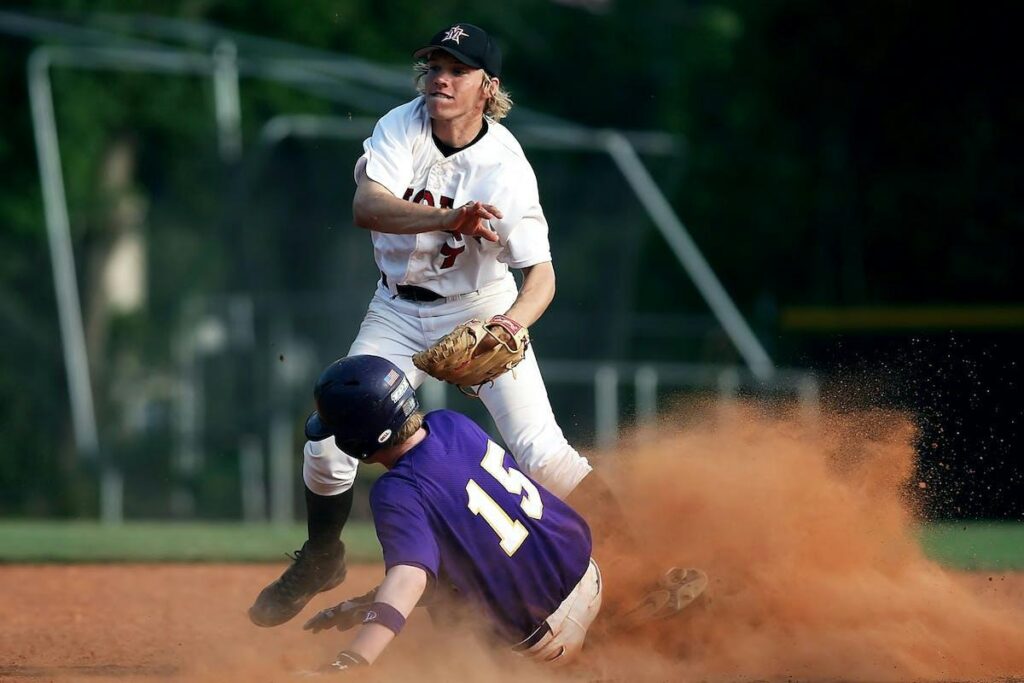
Youth baseball is a thrilling and rewarding sport that brings a lot of joy and benefits to young athletes. However, just like any sport, it comes with a risk of injuries. As parents, coaches, and players, it’s important to prioritize safety and injury prevention to ensure that the experience remains both fun and safe. In this post, we’ll discuss some key strategies and safety tips that can help minimize the risk of injury, keeping young players healthy and on the field.
1. Warm-Up and Stretching: Get Ready to Play Safely

Before jumping into the action, proper warm-up exercises and stretching are a must. Warm-ups help activate the muscles and get the blood flowing, reducing the chances of strains or sprains. For youth baseball players, dynamic stretches (like leg swings, arm circles, and torso twists) are great ways to get muscles prepared for the physical demands of the game. Focus on stretching the major muscle groups—shoulders, arms, legs, and core—ensuring flexibility and reducing injury risks. A solid warm-up routine is the first step toward a safe and effective practice or game session.
2. Proper Technique and Skill Development: Build Good Habits Early

One of the most important ways to prevent injuries in young baseball players is by teaching and reinforcing proper technique. Whether it’s throwing, catching, hitting, or running, having the correct form reduces the risk of overuse injuries and strain. Coaches should emphasize the importance of body positioning and movement mechanics from day one. Practicing these skills consistently helps players improve, while also minimizing the chances of injury caused by improper techniques or overexertion.
3. Age-Appropriate Equipment and Safe Playing Facilities

Making sure that young players have the right gear is essential for their safety. This includes properly fitting helmets, faceguards, chest protectors, shin guards, and appropriate footwear. Equipment should always be checked regularly for wear and tear to ensure it’s in good condition and continues to provide adequate protection. Additionally, playing fields should be well-maintained to avoid hazards like uneven ground or obstacles that could lead to falls or collisions. Keeping everything in top shape is a simple but effective way to minimize injury risks.
4. Injury Awareness and Open Communication: Don’t Ignore Pain

One key aspect of injury prevention is educating young players about the potential injuries they might face, like strains, sprains, or overuse injuries. Coaches and parents should teach players to listen to their bodies and be aware of any discomfort or pain. Open communication is vital—players should feel comfortable telling their coaches or parents if something doesn’t feel right. Addressing minor injuries early can prevent them from turning into more serious issues down the line, allowing for quicker recovery and minimizing long-term risks.
5. Proper Conditioning and Strength Training: Build Strength Safely

Conditioning exercises and age-appropriate strength training are excellent ways to reduce the risk of injury and improve athletic performance. By strengthening muscles, particularly in the core, legs, and upper body, players can improve stability, balance, and endurance. These exercises help prevent injuries by ensuring that muscles are prepared for the physical demands of the sport. However, it’s crucial that strength training is supervised and follows proper guidelines to avoid strain or improper form.
6. Rest and Recovery: The Importance of Taking Breaks

Rest and recovery are just as important as practice. Overuse injuries are common in youth sports, especially when young athletes push themselves too hard. It’s important for players to listen to their bodies and take breaks when they need them. Scheduling regular rest days and making sure players are getting adequate sleep allows muscles and joints to recover and repair. Incorporating rest into the training routine helps prevent injuries and burnout, allowing players to perform at their best over time.
7. Hydration and Nutrition: Fuel for Performance and Injury Prevention

Hydration and nutrition play a significant role in both performance and injury prevention. Encourage young players to drink plenty of water before, during, and after games or practices. Dehydration can increase the risk of cramping and fatigue, which can lead to injuries. In addition, a balanced diet that includes lean proteins, fruits, vegetables, and whole grains provides the necessary nutrients for muscle repair, energy, and overall health. Good hydration and nutrition not only help prevent injuries but also improve overall athletic performance.
8. Putting It All Together: Creating a Safe Environment for Young Athletes

Prioritizing safety and injury prevention in youth baseball is a team effort involving coaches, parents, and the players themselves. By incorporating these strategies—such as proper warm-up routines, reinforcing good technique, providing appropriate equipment, fostering communication, and encouraging rest and recovery—everyone involved can help reduce the risk of injury. With consistent practice, a focus on safety, and a love for the game, young players will be able to enjoy baseball to the fullest while staying healthy and safe.
FAQs: Injury Prevention in Youth Baseball
Q: How can I make sure my child is warming up properly before a game or practice?
A: Encourage your child to perform dynamic warm-up exercises like leg swings, arm circles, and torso twists to get their muscles activated. Stretching the major muscle groups (shoulders, arms, legs, and core) is crucial for flexibility and injury prevention.
Q: What role does proper technique play in preventing injuries?
A: Proper technique helps reduce the risk of strain and overuse injuries by ensuring that players are using the correct body mechanics when throwing, hitting, catching, or running. Good form helps players move more efficiently and avoid unnecessary stress on joints and muscles.
Q: What should I look for when buying equipment for my child?
A: Ensure that the equipment (helmets, gloves, shin guards, etc.) is age-appropriate and properly fitted. Regularly inspect the gear for any signs of wear and tear to ensure it’s still safe to use.
Q: How can I teach my child to recognize and communicate injuries?
A: Educate your child about the signs of common baseball injuries and encourage them to report any pain or discomfort they feel. Open communication about injuries helps address issues early before they become serious.
Q: Why is strength training important for injury prevention in youth baseball?
A: Strength training improves muscle stability, balance, and endurance, which are all key in reducing the risk of injury. It helps prepare muscles for the physical demands of the sport, but it’s important to follow proper guidelines to avoid overexertion.
Q: How much rest is enough for a young baseball player?
A: Adequate rest is crucial for recovery. Be sure that your child is getting enough sleep each night and taking breaks during practices to avoid overuse injuries. Scheduling rest days allows muscles to recover and strengthens the body for future games.
Q: How can I make sure my child stays hydrated during practice?
A: Encourage your child to drink water before, during, and after practices and games. Make water easily accessible, and remind them to stay hydrated throughout the day, especially in warm weather.
Conclusion
Injury prevention is key to ensuring that young baseball players stay healthy, enjoy the game, and continue to develop their skills over time. By following these safety tips—warming up properly, teaching good technique, using appropriate equipment, promoting rest and recovery, and prioritizing hydration and nutrition—parents and coaches can create a safe environment that minimizes the risk of injury. With these strategies in place, young athletes can thrive on the field, stay injury-free, and develop a lifelong love for baseball.

